2013 – From Gothenburg to Helsinki, via the North Cape
Date of tour: August–September 2013 (6 weeks)
Distance travelled: 6300km
Total cost of tour for two people and two motorbikes: approx. €5700 (including €540 for the ferry from Helsinki to Germany)
Map showing points of interest
(Click on the photos on the right to enlarge them.)
Getting there and around
There are numerous routes into Scandinavia, either by road via Copenhagen or by one of the many ferry connections. Since this tour immediately followed our Iceland trip (which finished in Hirtshals at the northern tip of Denmark), we rode the 50km from there to Frederikshavn and took the 3-hour ferry to Gothenburg.
At the end of the tour we took the ferry from Helsinki to Travemünde (Germany). The 27-hour overnight trip with cabin cost €540.
Within Scandinavia, the only ferry journeys we took were the short trips on the Rv17 on the northwest coast of Norway and some very short (free) ferry routes in the Finnish Lakeland. The ferry from Bodø (at the northern end of the Rv17) to the Lofoten Islands takes four hours and costs €35 per motorbike.
Speed limits in Norway and Sweden are 80-90km/h; in Finland up to 120km/h on motorways is permitted. In 2013, the price of petrol in Norway was approx. €2; in Sweden and Finland it was €1.70.
The only real road hazard we encountered on the tour was reindeer on the road in northern Norway and Finland. The locals tend to thunder straight through this hazard, but we couldn’t resist stopping to take photos every time we saw one of these arctic animals (Photo 1).
The highlights of each country are detailed below. Scroll down further for accommodation recommendations and notes on food and drink.
Sweden
I’ll be blunt: from a motorcyclist’s perspective, Swedish roads are boring. Their main purpose seems to be practical rather than aesthetic – they will transport you quickly from A to B but don’t expect a thrilling ride or views of the Swedish countryside on the way.
The majority of the roads that we travelled on in Sweden were wide, straight and flat and lined on both sides by dense forest which blocked the views of lakes, rivers and other interesting geological features (Photo 2). Occasionally, a break in the trees betrays a glimmer of water and it’s only then that you realise you’ve been following the shore of a beautiful lake all this time.
Even Route 342, known as Vildmarksvägen (Wilderness Road) and recommended as “one of the most spectacular drives in Sweden” in my guide book, was, quite frankly, boring and there was a definite lack of viewpoints and picnic tables. It wasn’t until we crossed the border into Norway, and the Swedish Rte 342 became the Norwegian Rv74, that we actually got to lean our bikes. We encountered more bends, dips and scenic views on 10km of Rv74 than we had on over 1000km of Swedish roads.
The good thing about travelling in Sweden, however, is that the people are very friendly and welcoming, the towns and cities are architecturally interesting (Photos 3–4) and the prices are slightly lower than in Norway. The reason we included Sweden in the Scandinavian leg of our trip was to visit friends and to get essential maintenance done on the bikes after our Iceland tour.
Summary
+ architecturally-interesting towns and cities
+ warm and welcoming people
- boring roads
Norway
You’ve got to hand it to the Norwegians – they know how to build great roads. Having already visited the southern part of Norway between Kristiansand and Kristiansund in 2012, the main focus of our 2013 tour was Nordland and the Far North. We therefore entered Norway via the curvy and scenic Rv74 from the Swedish border just north of Trondheim. These are the highlights from the Norwegian leg of our tour:
1. Rv17 used to be the main connecting road along the Nordland coast but, since the opening of the faster E6 inland, it is now a popular tourist route. Consequently, there are services all along the route catering to summer travellers: regular ferry links, campsites, fuel stations, shops, restaurants, etc. Rv17 is a definite must for motorcyclists visiting Nordland as it contains everything: bends, dips, hills, bridges, tunnels, ferry crossings and amazing views over the islands and fjords (Photos 5–7).
2. The Rv17 finishes at Bodø, where there is a regular ferry link to Moskenes on the Lofoten Islands –undoubtedly one of the most beautiful places on earth. Expect to see huge, jagged-peaked mountains rising majestically from deep fjords, with villages of colourful wooden houses nestling in between (Photos 8–9). The islands are famous for their production and export of stockfish; the red wooden huts on stilts (Rorbuer) which used to house the stockfish workers during fishing season now serve as accommodation for tourists (Photo 10).
3. Our next destination was Tromsø (Photo 11), which we had planned to reach via the Vesterålen Islands, with a ferry connection from Andenes to the island of Senja. Unfortunately, due to weather conditions, we decided against this route and instead took the E10, E6 and E8. Although these roads are certainly picturesque and contain some nice motorcycling stretches (Photo 12), we’d rather do the Vesterålen islands route next time. In Tromsø, the Polar Museum is well worth a visit and, for coffee and cakes as well as evening meals, Aunegården is a novel café/restaurant which has been converted from a butcher’s shop.
4. Any motorcyclist travelling this far north is invariably headed for the North Cape (Nordkapp), mainland Europe’s northernmost point (Photo 13). Even without the sticker and customary photo at the end as evidence of having been there, the roads leading up to the North Cape make the trip a pleasurable one. The E6 between Tromsø and Porsangenfjorden is scenic enough, but the bends and views on the E69 are outstanding (Photo 14).
5. Our final night in Norway was spent in the Sami “capital” Karasjok, in a cabin on a hill overlooking the river and town. There is a pricey and touristy Sami Cultural Centre in Karasjok, but just 120km down the road in Inari (Finland), the excellent Siida Museum (see Finland below) is much better value.
Summary
+ excellent motorbiking roads
+ fabulous scenery
- high prices
Finland
The roads in Finland at times resemble those of the Swedish “bulldoze a path straight through the forest”-style, although they tend to be a little more scenic, especially in the Lakeland area in the east of the country. However, similar to Sweden, there are not many roadside rest places with picnic tables to take a break.
What Finland lacks in fjords, it more than makes up for in lakes, however many of the roads are some distance from the water to enable the Finns to enjoy their lakeside homes in peace. Further, since Finland is a fairly flat country, there is not much need for roads to wind up and down mountains. Gentle undulations on straight tree-lined roads are more the order of the day.
Roads designated with up to three numbers are asphalted. Roads with four numbers or more are likely to be gravel roads, such as Route 5284 south of Kuhmo (Photo 15).
These are the highlights from the Finland leg of our tour:
1. Inari in northern Lapland is in a very picturesque location on Lake Inari, the third largest lake in Finland. The main attraction of the town is the excellent Siida Museum in which you could easily spend the whole day learning about Sami culture as well as human, plant and animal life within the Arctic Circle.
2. The E75(4) between Inari and Rovaniemi is scenic in places, particularly the section that follows the river between Vuotso and Aska (Photo 16). A recommendable place to stop for lunch on this route is Päivin Kamari on the main street through Sodankylä. The Arktikum Museum in Rovaniemi (Lapland’s main city) is as good as the one in Inari and is well worth a visit.
3. Oulu is a bustling city on the Gulf of Bothnia, although the routes leading into it are all large highway-type roads. It is a very green city with a long beach, a nice harbour, a busy market place and lots of small offshore islands (see Photos 17–19).
4. After Oulu, we entered Lakeland, starting at Kuhmo which has an excellent and free nature museum and a cultural centre that explains the importance of the Kalevala to Finnish culture. Route 22 from Oulu to Kuhmo starts to get more interesting once you reach Lake Oulujärvi.
5. Leaving Kuhmo, we headed south on the gravel route 5284 (Photo 15) to Valtimo, then followed Route 73 around Lake Pielinen until we reached the tourist resort of Koli, where we climbed to the top of the 347m-high Ukko-Koli for one of the most famous views in Finland (Photo 20).
6. At this point, we were beginning to despair of ever finding exciting motorbiking roads in Finland, but then we discovered the route from Koli to Oravi. Route 471 to Savonlinna is particularly curvy and scenic, especially the section just north of Enonkoski, and the road from Enonkoski to Oravi. We stayed in Oravi for three nights in order to explore the lakes by canoe (Photo 21) and to visit the castle in Savonlinna (Photo 22).
7. Just as we were leaving Lakeland and heading for Turku we discovered the best motorbiking roads of all in Finland. They are the 438, 436, 434 and 62 south of Savonlinna. All these roads have sweeping bends, slight gradients and good views of forests and lakes (Photos 23 and 24). We spent two nights in Turku, Finland’s oldest city (Photo 25).
8. Our final destination was Helsinki, (see Photos 26–27). Highlights of Helsinki included visiting Suomenlinna Fortress and the National Museum; taking a dip at the Yrjönkatu swimming hall, enjoying an archipelago cruise with dinner buffet and drinking coffee at the waterside Cafe Ursula and at the excellent Cafe Ekberg, the oldest pâtisserie in Helsinki.
Summary
+ friendly and helpful people
+ reasonably cheap (except for alcohol)
- apart from Lakeland, not great motorbiking roads
Accommodation
We stayed primarily in campsites. Some campsites are open all year round; others only from June to August, so check ahead. When nights are cold or wet, cabins are a good affordable option.
In all three countries, the cost of one night’s camping for 2 people, 2 bikes and a tent can be anything between €15 and €30. In Norway and Sweden, cabins range in price from €55-€90. Cabins in Finland are often not much more expensive than a tent pitch. If you’re really lucky you can get a lakeside cottage with sauna for under €100 (Photo 28).
On arriving at the ferry terminal in Gothenburg, we rode over to southeast Sweden and visited friends. The accommodation listed below is where we stayed once we started heading north from there:
Trängbo Campsite is located a pleasant 20-minute lakeside walk from Nora, an old and picturesque town 200km west of Stockholm. The campsite has good facilities, including a 50m swimming pool in the lake.
There are some nice cabins at Mora Park campsite, which seemed to be popular with bikers when we were there. The large, open-plan campsite area looked less inviting. The campsite is very close to Mora town centre.
Hotel Emma in Östersund is a very good value hotel in the centre of the city with secure parking for motorbikes.
Polarcamp in Hilstad is one of the campsites we stayed in on the Rv17 to Bodø. It is very close to the Arctic Circle and has great views of the mountains and fjords (Photo 29).
There are a small number of “rorbuer” (cabins that look like old fishing huts on stilts – see Photo 10) in Å i Lofoten. In high season it would be advisable to book ahead. The cabin we stayed in was at Moskenesstraumen Camping.
Brustranda camping is a well-equipped and pleasant site with a café on the Lofoten Islands. It is located in the peaceful Rolfsfjord on Rte 815 (Photo 30).
Lapphaugen Tourist Station is located on the E6 between the Lofoten and Tromsø. Due to its higher altitude, it’s much cooler here in the evening than in the coastal resorts.
Tromsø Camping is located around 25 minutes’ walk over the bridge from the town centre (Photo 31).
There are three campsites next to each other on the river in Alta: Alta River, Alta Strand and Wisløff. We stayed in Wisløff but all three looked similar.
Kirkeporten Camping in Skarsvåg near the North Cape claims to be the world’s northernmost campsite. We asked the proprietor – he said he’d tried to find a more northern one but couldn’t! (Photo 32)
Karasjok Camping is in a nice location overlooking the river and Karasjok town. There is a large tepee on the campsite where you can sit on reindeer skins around the fire and grill your burgers in the evening (Photo 33).
Uruniemi Campsite is located on the shores of Lake Inari, around 2km south of the town (Photo 34).
The campsite in Rovaniemi is in a lovely location on the bank of the River Kemijoki, directly opposite the city itself, which is reachable by a short walk over the rail, road and pedestrian bridge (Photo 35).
In Oulu I would NOT recommend staying at Forenom Hotel. A better option would be Nallikari Campsite which has a beach location on the Gulf of Bothnia (Photo 18). Unfortunately we made the wrong decision with our accommodation option in Oulu.
Lentuankoski campsite, around 15km north of Kuhmo was one of the nicest Finnish campsites we stayed at. The sauna at this campsite is right on the lake front, making jumping into the cool water between sauna visits very quick and easy (Photo 36).
In Koli we were very fortunate to discover an excellent value lakeside cottage, complete with sauna and rowing boat (Photo 28).
The Saimaa Holiday Centre in Oravi has boat hire facilities and is a good place to base yourself for exploring the Lakeland area. Although it’s not mentioned on the website, camping is available for €15 per night (Photo 37).
The Sisters of St Bridgettine of Sweden offer a warm and friendly welcome to visitors of any faith in their guesthouse in the centre of Turku. A twin room costs €65 including breakfast and there is secure parking for motorbikes.
In Helsinki, Rastila Camping is a pleasant waterside campsite with excellent amenities, including restaurant and free wifi, and only a 20-minute Metro ride from the city centre. It makes a very good base for exploring the city (Photo 38).
Food and drink
First, a note on the cost of food and drink in the Nordic countries:
Norway is by far the most expensive Scandinavian country for eating and drinking. Supermarket prices are around twice that in Finland and in many other European countries. In restaurants, a burger and fries costs around €20, a pizza €25 and a steak or fish meal €40. In bars, a cola is €5 and a beer or glass of wine €10. A bottle of wine from one of the state-regulated alcohol stores costs €10 and upwards. Sweden is slightly cheaper.
In contrast, the cost of eating and drinking in Finland is relatively low. Supermarket prices are reasonable and in restaurants, all-you-can-eat lunch buffets for €10 or less are excellent value. In addition, beer is available to buy in supermarkets at low cost, and a bottle of wine from an alcohol store can be bought for €7 (although alcohol in bars and restaurants is relatively expensive).
Photos 19 and 39–40 show some of the specialities that we sampled on our tour.
Recommended reading: Lonely Planet Travel Guide to Norway (2011)
Recommended reading: Lonely Planet Travel Guide to Finland (2012)
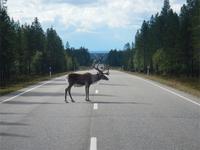 1. Reindeer on the road can be a hazard
1. Reindeer on the road can be a hazard
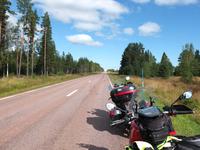 2. Swedish roads are not especially exciting
2. Swedish roads are not especially exciting
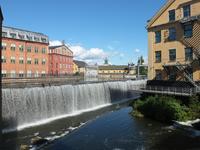 3. Norrkoping, Sweden
3. Norrkoping, Sweden
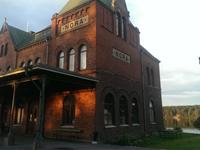 4. Nora Railway Station, Sweden
4. Nora Railway Station, Sweden
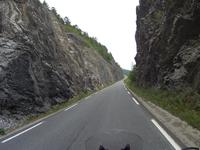 5. The Rv17 in Norway
5. The Rv17 in Norway
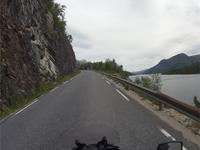 6. The Rv17 in Norway
6. The Rv17 in Norway
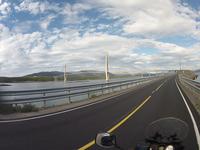 7. Bridge on the Rv17
7. Bridge on the Rv17
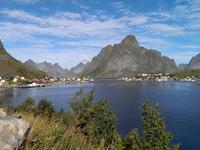 8. The Lofoten Islands, Norway
8. The Lofoten Islands, Norway
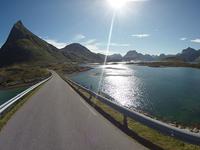 09. Road on the Lofoten Islands
09. Road on the Lofoten Islands
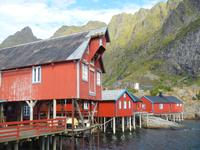 10. Rorbuer (cabins) in the Lofoten
10. Rorbuer (cabins) in the Lofoten
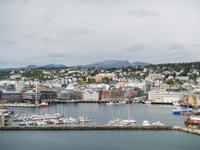 11. Tromso, Norway
11. Tromso, Norway
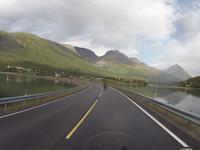 12. E8 to Tromso
12. E8 to Tromso
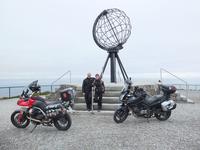 13. Nordkapp
13. Nordkapp
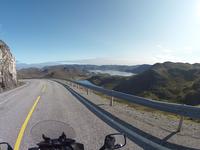 14. E69 from Nordkapp
14. E69 from Nordkapp
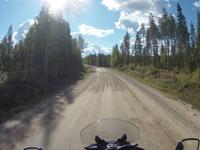 15. Route 5284 near Kuhmo, Lapland
15. Route 5284 near Kuhmo, Lapland
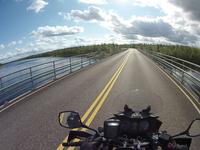 16. E75 Inari to Rovaniemi, Lapland
16. E75 Inari to Rovaniemi, Lapland
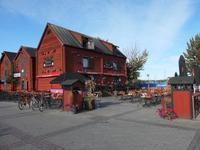 17. Restaurant at Oulu harbour, Finland
17. Restaurant at Oulu harbour, Finland
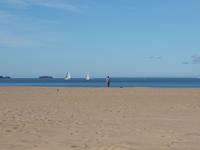 18. Oulu beach on the Gulf of Bothnia
18. Oulu beach on the Gulf of Bothnia
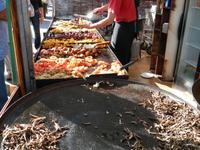 19. Lunchtime at Oulu market place
19. Lunchtime at Oulu market place
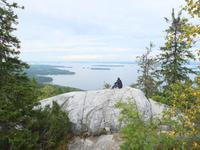 20. View from Ukko-Koli, Finnish Lakeland
20. View from Ukko-Koli, Finnish Lakeland
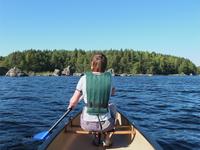 21. Canoeing in Finnish Lakeland
21. Canoeing in Finnish Lakeland
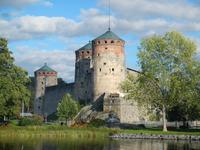 22. Olavinlinna Castle, Savonlinna, Finland
22. Olavinlinna Castle, Savonlinna, Finland
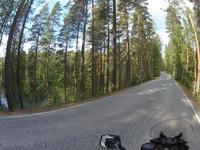 23. Route 438 near Savonlinna, Finland
23. Route 438 near Savonlinna, Finland
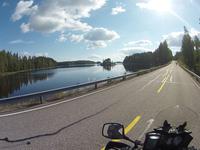 24. Route 62 in the Saimaa Lakeland, Finland
24. Route 62 in the Saimaa Lakeland, Finland
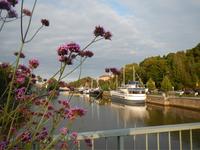 25. Turku, Finland
25. Turku, Finland
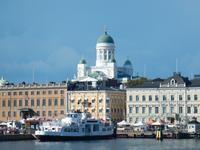 26. Helsinki, Finland
26. Helsinki, Finland
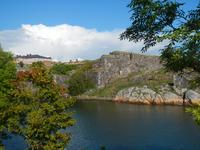 27. Suomenlinna Fortress, Helsinki
27. Suomenlinna Fortress, Helsinki
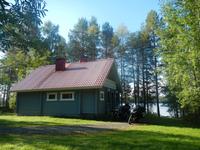 28. Lakeside cottage in Koli, Finland
28. Lakeside cottage in Koli, Finland
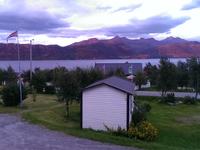 29. Polarcamp near the Arctic Circle, Norway
29. Polarcamp near the Arctic Circle, Norway
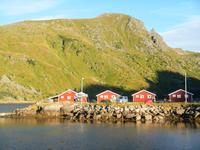 30. Brustranda campsite, Lofoten, Norway
30. Brustranda campsite, Lofoten, Norway
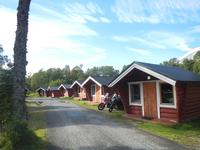 31. Tromso Camping, Norway
31. Tromso Camping, Norway
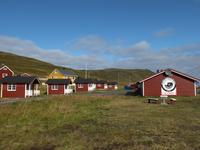 32. Kirkeporten Camping near the North Cape
32. Kirkeporten Camping near the North Cape
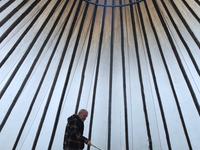 33. Grilling burgers in the tepee in Karasjok, Norway
33. Grilling burgers in the tepee in Karasjok, Norway
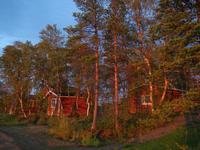 34. Uruniemi Campsite, Inari, Finland
34. Uruniemi Campsite, Inari, Finland
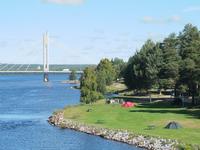 35. Campsite in Rovaniemi, Finland
35. Campsite in Rovaniemi, Finland
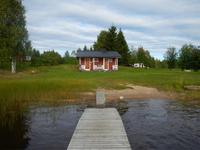 36. Sauna at Lentuankoski campsite, Finland
36. Sauna at Lentuankoski campsite, Finland
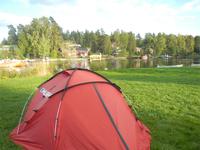 37. Oravi campsite, Finnish Lakeland
37. Oravi campsite, Finnish Lakeland
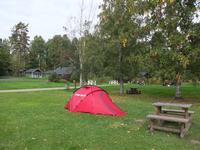 38. Helsinki Campsite
38. Helsinki Campsite
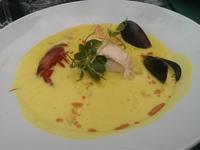 39. Fish soup
39. Fish soup
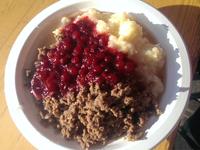 40. Sauteed reindeer with mashed potato and lingon berries
40. Sauteed reindeer with mashed potato and lingon berries
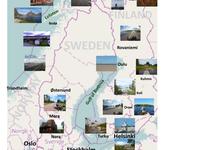 Scandinavia map
Scandinavia map